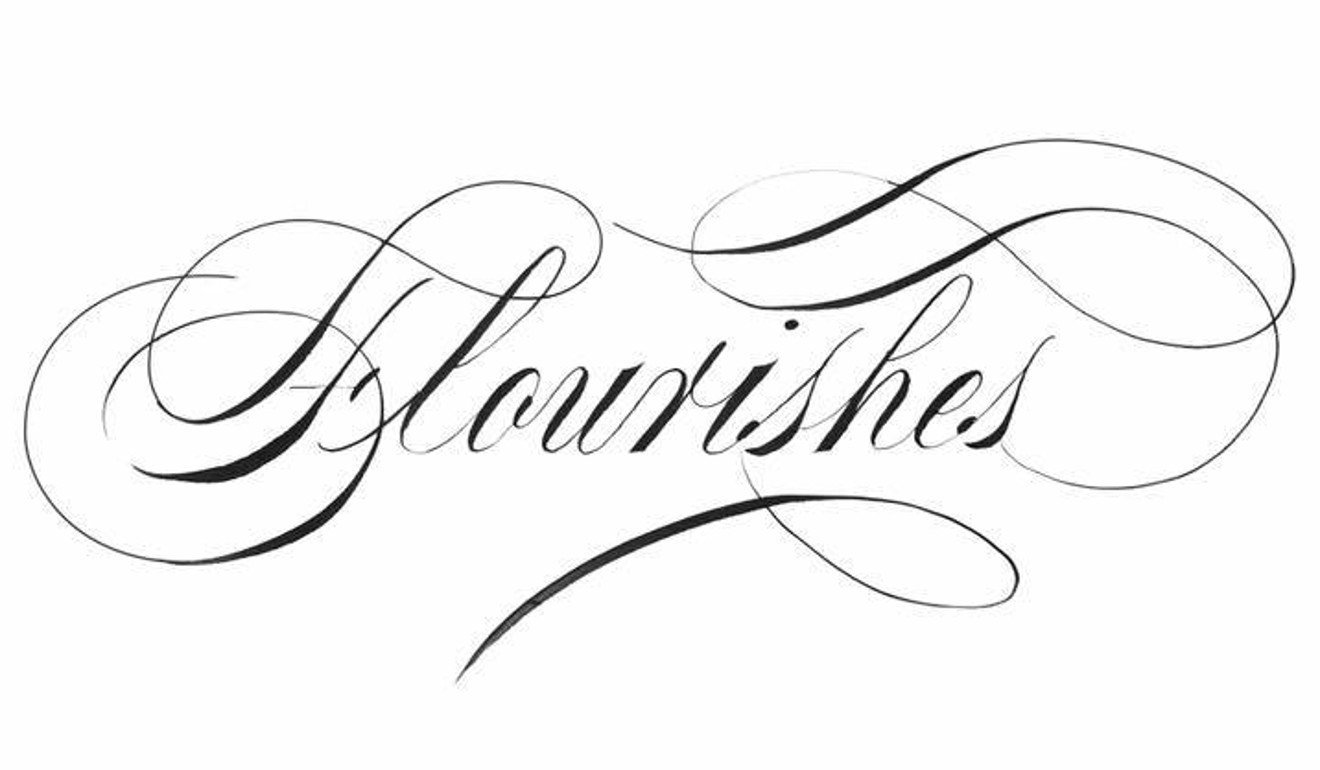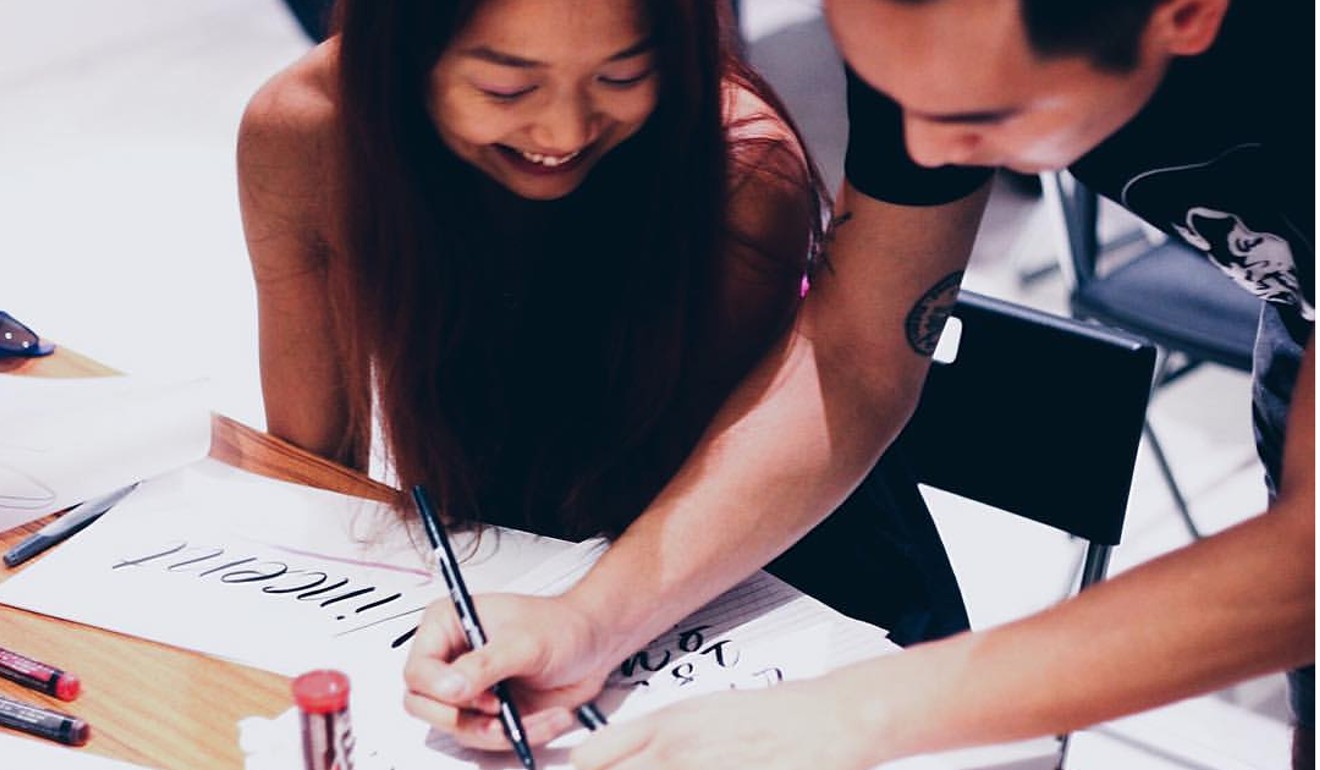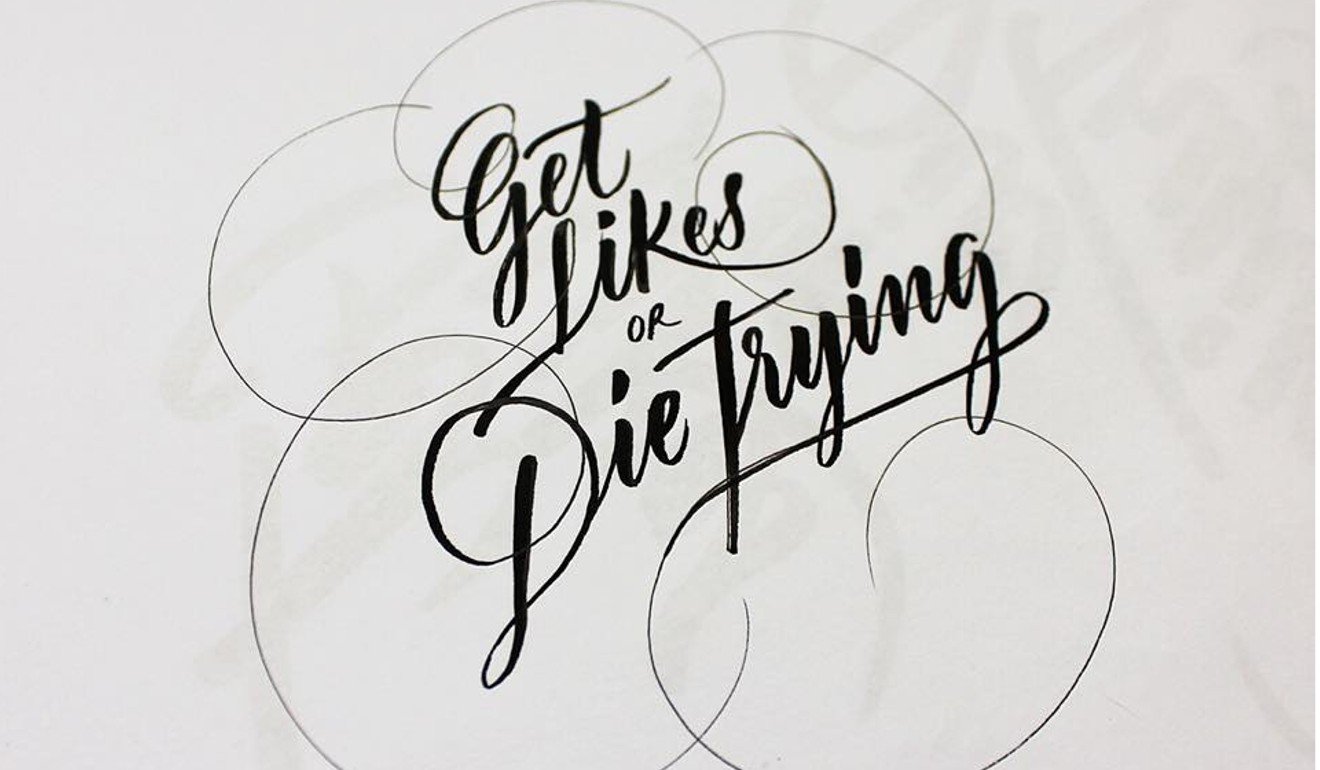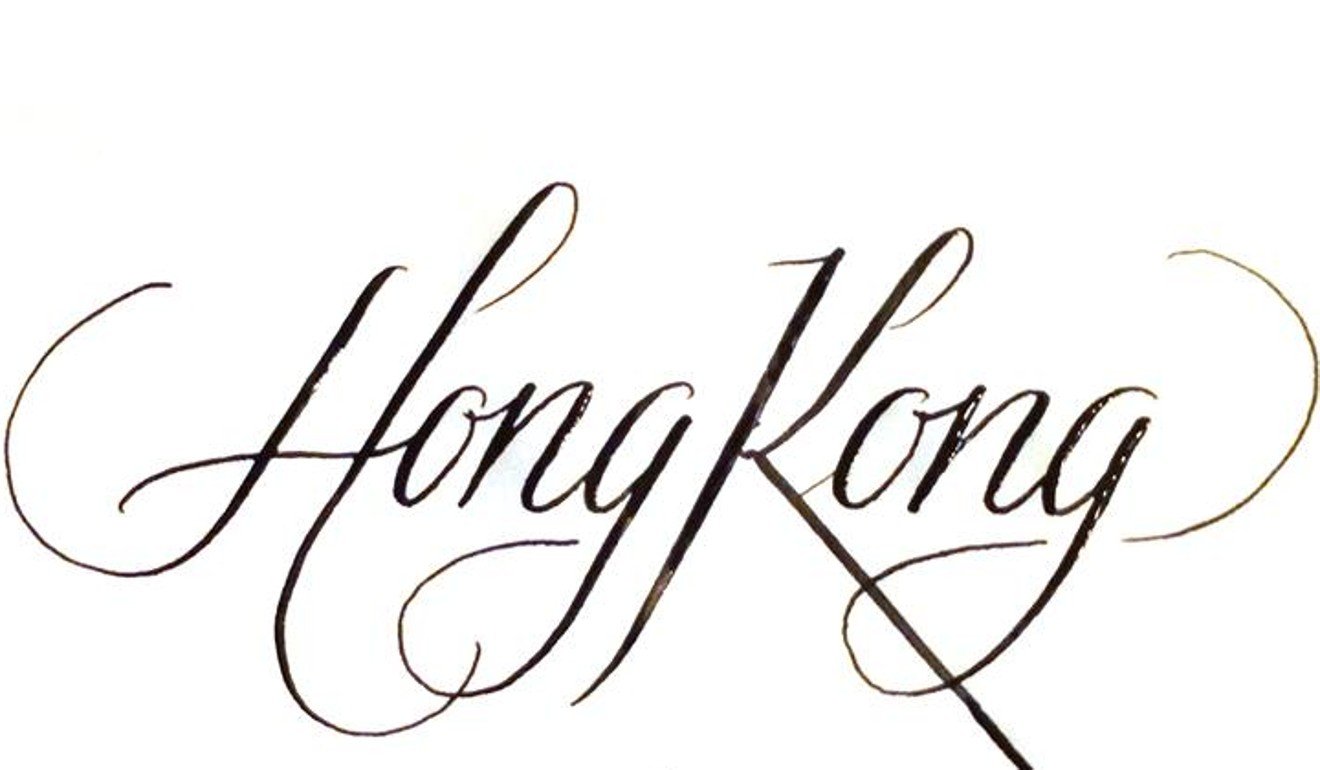
Heady days for hand lettering in Hong Kong and why it can pay to master the strokes
Not to be confused with typography or calligraphy, hand lettering is becoming more popular thanks to a growing interest in crafts, while social media is providing a platform for experts to show off their strokes
If you haven’t yet spotted the hand-lettering trend, you’re sure to start noticing it after you’ve read this. It’s everywhere – from book covers and film titles to magazines and social media. Big brands are employing artists to do live demonstrations and there has been a surge of interest in learning the traditional art.
Hand lettering is not to be confused with typography, which is about arranging type and almost always uses preformed letters. Hand lettering is a different skill – it’s about the art of drawing letters and as such is more illustration than graphic design. Technically, hand lettering (which involves multiple strokes using pens) is also different from calligraphy (which involves single strokes using brushes), but the terms are sometimes used interchangeably.

Hand lettering is a trend that has travelled the world and Hong Kong is no exception. Thirty-year-old Jeremy Tow has been fascinated with the art of drawing letters since he was six. He puts it down to two key influences: his Vietnamese mother and Cambodian father, both of whom had beautiful handwriting, and growing up in Aulnay-sous-Bois, a gritty suburb of Paris, where he was surrounded by graffiti artists.
“When I was at school, I was always trying to write nicely and was always the last one to finish writing,” says Tow, who moved to Hong Kong seven years ago and works as a brand designer. “I never stopped doing that. It was always fun.”
A post shared by Jeremy Tow @jeremytowhk (@jeremytow_lcsc) on Dec 23, 2016 at 1:02am PST
“With social media it’s so easy to promote your art and hand lettering is something where you can post a short video and it becomes big,” says Tow, who has done live performances for brands including H&M and Pure Yoga.
The furries of Hong Kong - men and women who dress up as animals and say they feel more at home in their second skin
Graphic designer and Western calligrapher Hui Siu-kong agrees that social media has played a big part in the resurgence of interest in hand lettering, pushing it to the forefront of design. Hui, 53, was practising the art long before it became the hot design ticket. He studied graphic design, calligraphy and lettering at the Hong Kong Polytechnic Design School in the 1980s, which is where he met and was taught by the respected calligrapher Derick Pao.
“Before studying at the polytechnic, I only knew about Chinese calligraphy,” Hui says. “I really enjoyed Western calligraphy – each letter is an art form – and after graduating I kept on learning.”

In 2005, Hui joined Pao’s Alpha Beta Club (ABC), the Hong Kong society of Western calligraphic art which Pao founded in 1988. Soon after he began posting his work on Facebook and in 2015, the ABC contacted him and asked him if he could give lessons to its members.
Hui thinks the reason more people are getting into hand lettering nowadays is because there is a growing interest in things that are hand-made. Tow also puts the recent popularity of the technique down to the broad trend in crafts.
“People want to get back into older arts and into craft,” says Tow, who advertises his occasional classes on his Facebook page. “Hand lettering is one of those old arts – it’s traditional, that’s what people like about it.”
The story of Hong Kong’s newest old junk, built by hand the traditional way in China
It’s mainly women who attend hand-lettering classes and while it’s fairly easy to get a hang of the basic steps, it takes many years to become proficient. According to the respected British calligrapher and teacher Sheila Waters, it takes most people about five years to learn. “And that’s not learning to a professional standard,” Hui says, “but to be able to write beautifully and elegantly.”

Hui practises for at least an hour every day, occasionally for the whole day and always late at night. “At 1am or 2am, when the world is quiet and I am calm, that is when I do my calligraphy,” he says.
Hand lettering is a natural fit for luxury brands and Hui counts Cartier, Tiffany, Bulgari and Lane Crawford among his clients. He addresses greeting cards or personal messages for VIPs and is sometimes employed to use his elegant script to write names for place settings.
He and another local hand letterer, Alice Mak, had their work featured in an exhibition at the Taiwanese bookstore Eslite in Tai Koo Shing in April. That exhibition moved to a public exhibition on the second floor of Cityplaza on Monday.

“Western calligraphy is very hot in Taiwan,” Hui says. “The Taiwanese have a strong sense of aesthetics and they do more activities and workshops on calligraphy than here. In Hong Kong many people want instant noodles and even when learning they want instant results.”
Tow advises those new to hand lettering to do a little research before settling on a teacher. He has seen some “teachers” take just one workshop, practise for three or four months and then promote themselves as a hand-lettering expert. “You don’t need a licence [to teach hand lettering]. It’s quite easy to make people think that you are good,” Tow says.
Hui is still in touch with his old polytechnic lecturer Pao, who has retired in Canada. In a recent e-mail exchange, they discussed the surge of interest in hand lettering.
A post shared by Jeremy Tow @jeremytowhk (@jeremytow_lcsc) on Apr 12, 2017 at 8:42pm PDT
“Pao said to me, ‘With today’s technology, it is so much easier to get information on letters and calligraphy on the internet. Help your students to differentiate between what is good and what is amateurish,’” Hui says.

Hui concedes that the hand lettering trend will most likely pass in a few years, but he says committed calligraphers such as himself and Tow will continue writing.
“For me, it’s not just writing beautiful words,” he says. “I use writing to make art pieces. The pieces in my exhibition at Eslite bookstore are about animal rights. I want to tell people about that and I use hand lettering to express myself.”


